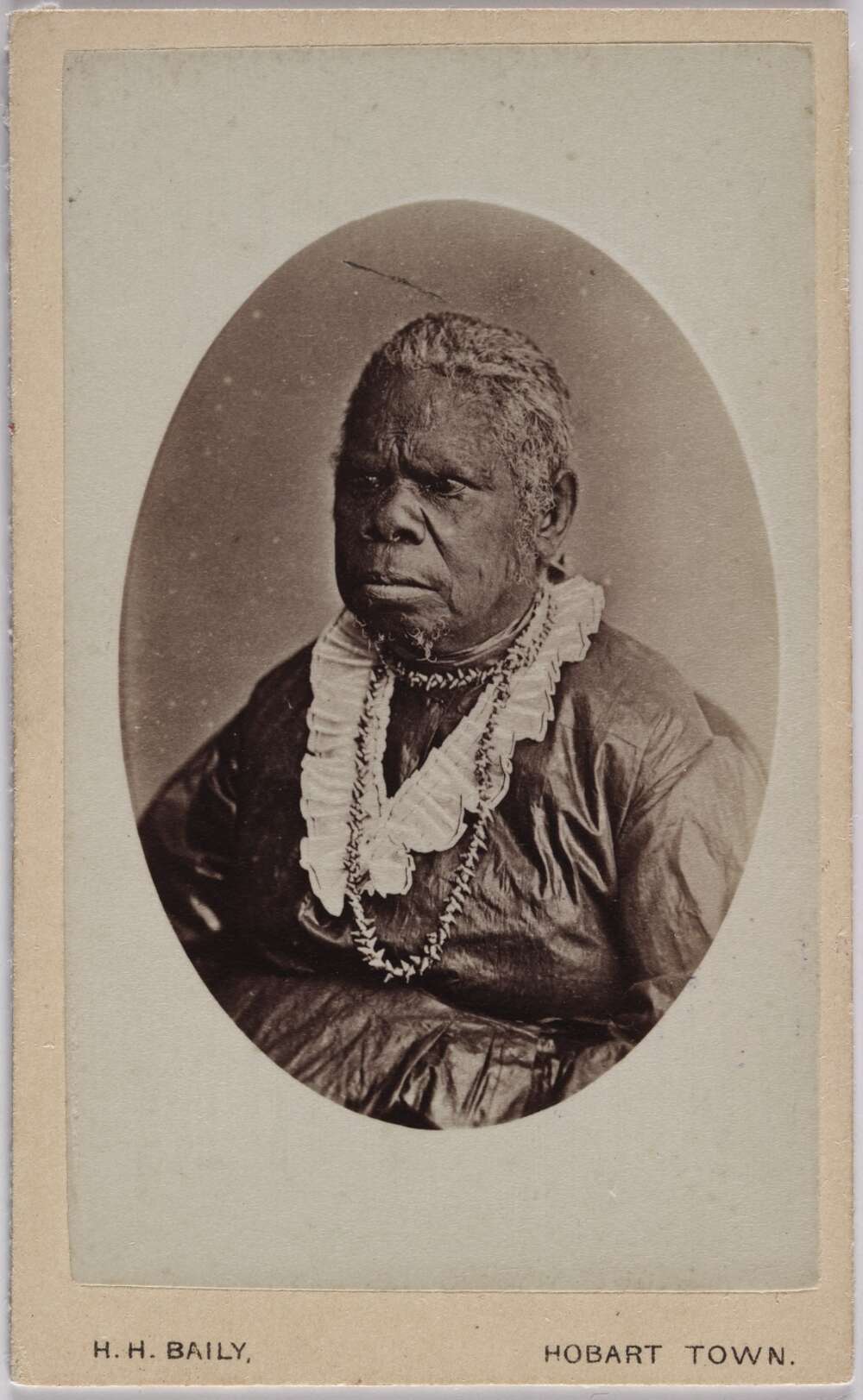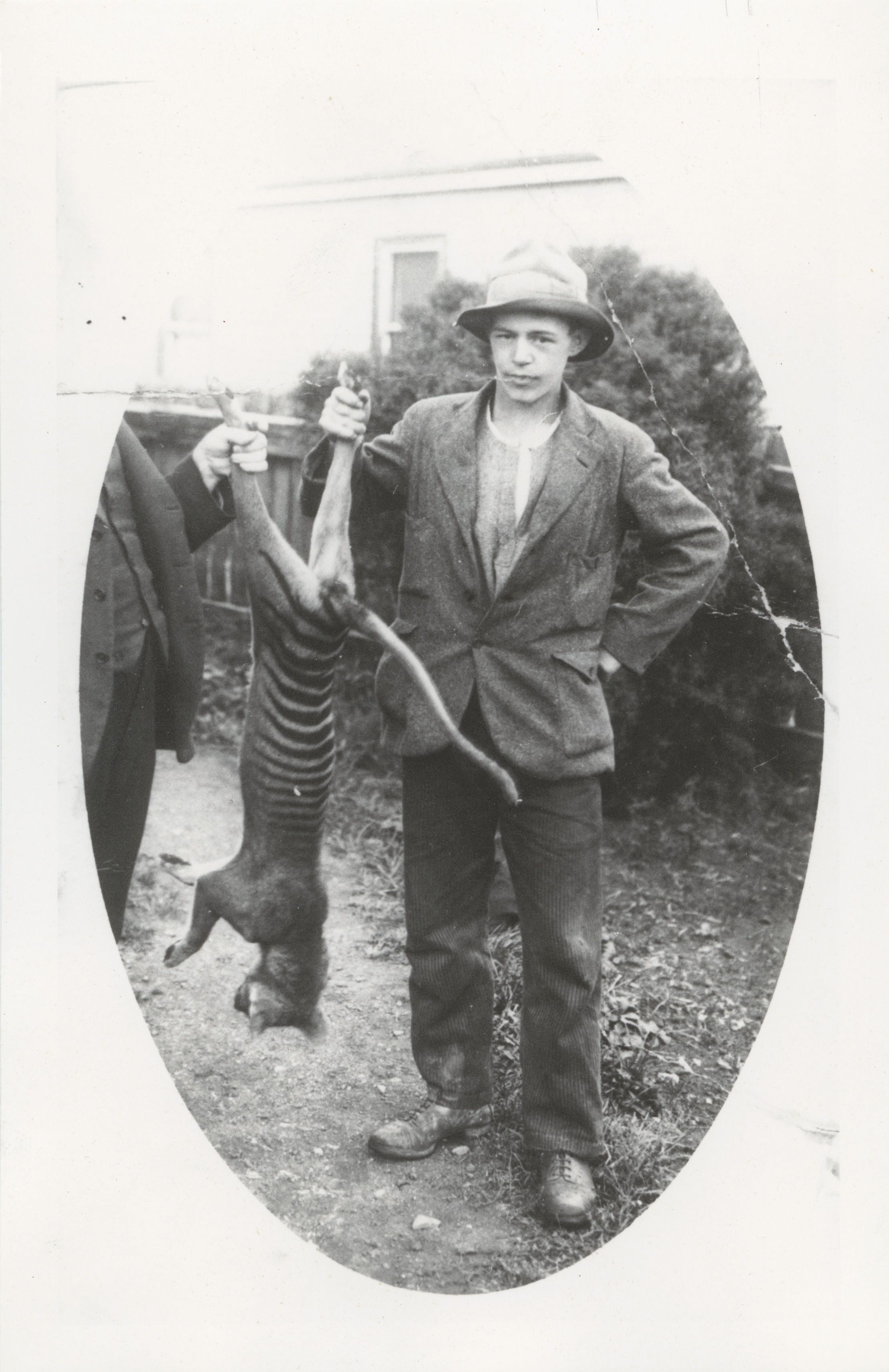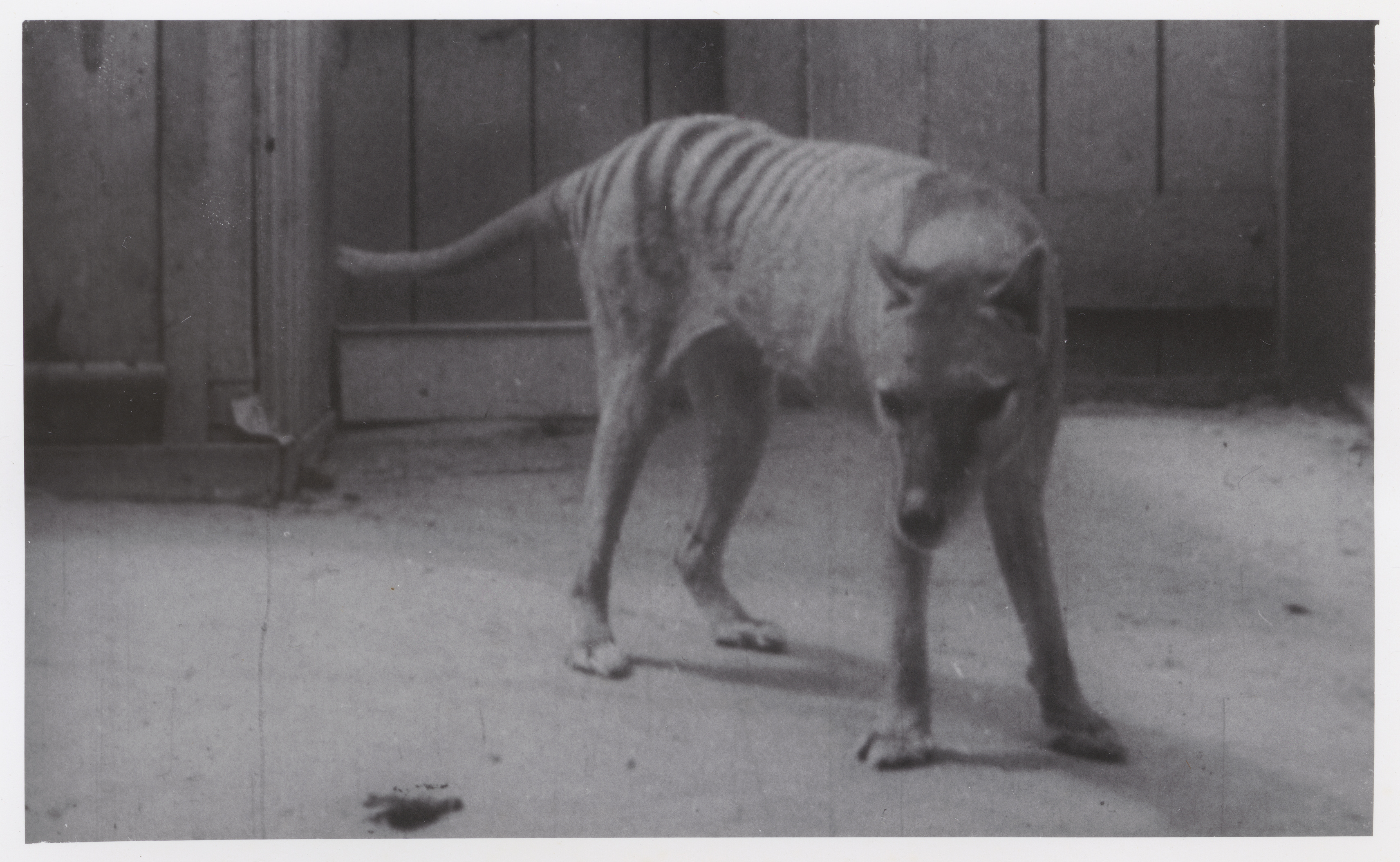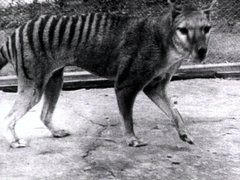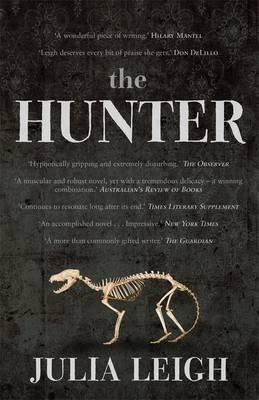AustLit
-
The words ‘extinction’ and ‘extermination’ have tragic, ominous and sometimes misleading resonances in Tasmanian history and writing. In the account of his brief sojourn in Tasmania in 1895 Mark Twain uses the word ‘extermination’ in connection with the stories he heard about the Aborigines. He describes his ship passing by Flinders Island: ‘Passing between Tasmania (formerly Van Diemen’s Land) and neighbouring islands whence the poor exiled Tasmanian savages used to gaze at their lost homeland and cry; and die of broken hearts […] As far as Tasmania is concerned the extermination was complete: not a native is left’ (256). Twain didn’t know about descendants of Palawa people on Kangaroo Island, South Australia, and the Bass Strait Islands, some of whom may have seen Twain’s ship passing. His travelogue includes the photograph of Truganini with the marvellous shell necklace but with the caption ‘The Last of Her Race’ (266).
-
The myth of Truganini as the Last Tasmanian persists, even into the present, and therefore of the extinction of the race of Tasmanian Aborigines. This white settler narrative of what Kim Scott has called the LFBA (the ‘Last Full Blood Aborigine’) has extensive connections to the whole discourse of race in the history of Australian settlement, but the case of Tasmania and of Truganini are the emblematic instances (Scott 27-28). Many regions of Australia have folk narratives of their LFBA. This set of narratives, with the ‘concept of race at the centre of it,’ (Scott 28) is multi-faceted and embraces the pathos of extinction (contrition, guilt, sombre awareness and moral outrage), immoral and spurious science and supremacist anthropology, eugenic policy and administration, the ‘Truth’ about the past (who owns it?), the idea of a national ‘original sin,’ swift genocide, inevitable dying out, an Australian holocaust (see O’Regan 131). This extinction nexus is also available for appropriation for ‘Orientalist’ fictions like Anouar Benmalek’s L'Enfant du Peuple Ancien(2001) set in 1870s Tasmania and which interleaves British genocidal history with French imperialism in Algeria (see Haynes 206).
The evidence of the literature of Tasmania is that these themes are approachable only in limited ways such as, for example, historiographic debate. Tom Haydon’s 1978 documentary The Last Tasmanian and its remake in the following year are instructive in this context. The kinds of institutional and narrative problems raised by Haydon’s film – closed social systems and the loss of material culture; colonising archaeological knowledge – still circulate in very similar rhetoric and positionality to nearly 40 years ago (see Sykes; Laurajane Smith). This is Lyndall Ryan’s point in the final paragraph of her history of the Aboriginal Tasmanians (p. 255) and Greg Lehman’s point about how ‘Tasmanians have yet to engage fully with the unspeakable in our history and accept its terrible legacy,’ that is, near-extinction, near-genocide (212). Only the return of traditional lands, visual history like Ricky Maynard’s and Julie Gough’s, and poetry like Errol West’s and Jim Everett's sound a cultural future, not the proliferation of white historical fiction and contrarian historiography (see Gough, ‘Fugitive History’).
-
But as far as Tasmanian narratives of extinction go, it’s open season on the thylacine. This is the story of a totally successful extinction, like the Pedder galaxias in the 1980s and the earlier one of the Tasmanian emu in the 1860s, and possibly the swift parrot in the present. It culminates in the death in captivity of Benjamin (in fact a female), the last living Tasmanian Tiger (with its own genus, Thylacinus cynocephalus) in Hobart’s Beaumaris Zoo on 7 September, 1936 – The Last of her Species. This zoo, as it turns out, is also extinct, dying out in the year after the thylacine. Robert Paddle’s The Last Tasmanian Tiger: the History and Extinction of the Thylacine (Cambridge UP, 2000) is an up-to-date and comprehensive ‘narrative of the thylacine in its scientific context’ and adduces much detail about the historical and environmental myths about the tiger, about 19th-century ‘tiger men,’ the well-recognised phenomenon of post-extinction ‘sightings’ and of Thylacine Expeditionary Research Teams (197; see also Guiler). It also includes a moving account of the role of the curator Alison Reid in caring for Benjamin and her disgraceful treatment by a misogynist zoo administration, which contributed directly to the maltreatment of the last tiger and her final death. Paddle also relates the long story of efforts to protect the tiger: J.E.C. Lord [of the Tasmanian Animals and Birds’ Protection Board, 1928] ‘had printed for distribution through police stations, a four-page pamphlet on Animals and Birds, Tasmania: Close Seasons, Prohibitions, Restrictions dated 1 July 1936, which indicated in the opening section that the ‘Tasmanian Marsupial, Wolf, or Native Tiger’ was now ‘wholly protected.’ Legally, the thylacine did not actually become wholly protected until 10 July 1936, the date when the Governor signed the proclamation […] Whether anybody wandered around to Hobart Zoo and told the last thylacine the good news is unknown. Unequivocally, the species was totally protected for the last fifty-nine days of its existence’ (184). See also Nicholas Smith, ‘The return of the living dead: unsettlement and the Tasmanian tiger,’ Journal of Australian Studies 2012 (36.3): 269-89.
Cognate with the 19th-century myth of the evolutionary inferiority of the Tasmanian Aborigines is the myth of the evolutionary oddity and inferiority of the carnivorous marsupial. Paddle illustrates the way in which the iconography of the tiger reflected the dialectic of 19th-century natural science, a science that was also used in race theory:
Marsupial equality quickly became the standard fare of the creationists, as, in time, placental chauvinism became the bread and butter of progressive evolutionists. These differing perspectives of the animal were, again, reflected in iconography. Anti- or at least non-Darwinian (whether from creationist or Lamarkian) viewpoints projected the animal as noble and grand (see J. Gould, 1851), representing the thylacine as the ‘monarch of the forest’ (Launceston Daily Telegraph, 12 November 1884), often appropriately placed on top of the mountains, a ’lord of all,’ looking down upon the rest of marsupial creation […]. As progressive evolutionists became the dominating intellectual force they ignored these interpretative illustrations of the thylacine. In 1894 Lydekker, noted evolutionist and friend of Huxley, returned to Lizars’ 50-year-old illustration in Waterhouse (1841) of a primitive, skulking thylacine to serve as the illustration accompanying his own work. (214)
Today the iconography of the thylacine permeates the Tasmanian cultural landscape. It appears on the Tasmanian coat of arms as an heraldic beast (two Tasmanian tiger escutcheon supporters, proper); as the official state government logo, a tiger peering through long grass; also on number plates, city seals, council logos, in sporting teams’ names and insignias, on commercials for beer, on numerous company brands, as holograms in museums and in tourist advertising. In this sense there are constant, emblematic reminders in Tasmania of the island as a site of extinction and as the signal instance of Australian extinction, 7 September being national Threatened Species Day. But awareness of the tiger’s extinction has a global extent as well, given the number of tigers that were in zoos and museums around the world. Perhaps the most charming instance of this world awareness of the thylacine’s extinction, if extinction can be charming, is the carousel in Paris’s Jardin des Plantes. This carousel of Extinct and Endangered Animals, the Dodo Manège, includes a thylacine for children to ride on, just behind the dodo. This ‘merry-go-round […] was the inspiration of a scientist who used to work in the nearby natural history museum, and who saw a chance to combine something delightful for children with an ecological message’ (Double).
-
In extinction, then, the tiger has become a mythical beast and its representation in the literature of Tasmania is tied to a whole other set of thylacine iconography. This is primarily gothic, or more accurately, biogothic, and follows what the Lonely Planet guide to Tasmania calls ‘version two of the story of the tiger continuing a furtive existence deep in the Tasmanian wilderness’ (301). The biogothic meme attracts many contemporary cultural mutations, often paranoid ones, about cloning, de-extinction and commercialised, clandestine multinational biogenetics. But it also has an associational resonance that is inescapable, given the long history, beginning with d’Entrecasteaux, of the methods and discourse of science in relation to Tasmanian Aboriginals. It was there as early as James Bonwick’s chapter about the medical desecration of William Lanney’s body by Drs Stokell and Crowther (1870) and, the year after, in the counsel of G. Krefft, at the Australian Museum, Sydney, to the staff of the Tasmanian Museum and members of the Royal Society of Tasmania: ‘Let us therefore advise our friends to gather their specimens in time, or it may come to pass when the last Thylacine dies the scientific men across Bass’s Straits will contest as fiercely for its body as they did for that of the last aboriginal man not long ago’ (Paddle 196). The thylacine appears on the insignia and medal of the Royal Society of Tasmania, the oldest scientific society in Australia. Krefft’s subsequent colleagues at the Australian Museum in Sydney ran a Thylacine cloning project in the early 2000s. Related to this history is Tasmania’s contemporary role in genetic research and epidemiology like that of the ‘fragile X’ gene and the neuro-degenerative Huntington’s disease, facilitated by the nature of its demography and human endemism.
The Literature of Tasmania dataset has numerous entries available via the search term ‘Thylacine’ (240+ entries). These include children’s and YA novels, adult fiction, some Indigenous writing, many individual poems, films and critical essays. For example, Nan Chauncy, Tiger in the Bush (1957), Leigh Maynard, How the Tasmanian Tiger Got Its Stripes (2004), Michael Hyde, Tyger, Tyger (2001), Erle Wilson, Coorinna: A Novel of the Tasmanian Uplands (1953), Louis Nowra, Into That Forest (2012), Heather Rose, White Heart (1999), John Kinsella, ‘The Hunt’ (1996), Vivian Smith, ‘Thylacine’ (1953), James Charlton, ‘Thylacine Dreaming’ (1985), Col Bailey,Tiger Tales: Stories of the Tasmanian Tiger (2001), Daniel Nettheim, dir. The Hunter (2011), Margaret Wild and Ron Brooks, The Dream of the Thylacine (2013), Leigh Dale, "‘Even If They Were to Leave Europe’: Frankenstein in Tasmania"(2012), Tony Hughes-d’Aeth, ‘Australian Writing: Deep Ecology and Julia Leigh's The Hunter’ (2002), Susanne Van Esse, ‘Denying Extinction?: The Thylacine in Children's Literature’ (1996). In 2001 Roar Films produced the CD ROM The Tragedy and Myth of the Tasmanian Tiger . There are also trashy romances like Sean Kennedy’s Dash and Dingo: In Search of the Tasmanian Tiger (2009) and Graham Parker’s fantasy memoir, The Other Life of Brian (2003) which includes a post-extinction sighting and pursuit by cryptozoologists. Margaret Mittelbach and Michael Crewdson’s Carniverous Nights: on the trail of the Tasmanian Tiger (2006) offers a comic, North American perspective on the Thylacine and gonzo taxidermy.
-
Watch the only know film of the last Thylacine at the National Film & Sound Archive.
-
Julia Leigh’s The Hunter (1999) has become perhaps the best known of Tasmanian fictions of extinction, partly because of the 2011 film of the novel. A kind of spy-thriller, the narrative is focalised mainly around the virtually nameless M (Martin David, assumed), a ‘Naturalist, in reality a survivalist-skilled agent, for an anonymous multinational biotechnology company, engaged by a middleman and sent to Tasmania in response to a post-extinction tiger sighting. He sets up a base below the escarpment at the southern end of the central highlands, at somewhere like Maydena. Much of the narrative is taken up with M’s ranging the highlands in search of the female tiger. Alternating with this action is his autistic relationship with the family of Jarrah Armstrong where he is staying (Lucy, Sass and Bike). They are a family of ferals and Armstrong is the author of an ecocritical text, Bioethics for Another Millenium, but he has disappeared. In fact he’s been murdered, probably by anti-environmentalist hitmen. Eventually M tracks the thylacine down and shoots her, harvests the blood and organs, for some kind of biological weapons research:
And now the obstetrics, which is more his style. He cuts into the groin and slides a hand in to search for the ovaries … searching, searching. When he has them he locks each one away in a custom-built vial of liquid nitrogen, handling the nitrogen as it if were a bomb. An egg, he knows can be fertilise with the sperm of a semi-compatible organism, like a lynx or a wolf. Or better still, but needing more time, a sperm could be fashioned from the thylacine’s own blood. Self-impregnation. He pulls out the uterus – intact – a plump slippery slimy thing. There is little or no chance it contains a foetus, but he takes is just the same; not to do so would be remiss. Then the job is done; the motherlode safely packed away. (166)
Tasmania provides, then, the site for this postnatural drama of extinction but as part of a speculative deep-ecological context of biological warfare, genetic engineering, cloning, and, by implication, bioethics. There was some scepticism about Leigh’s project in this novel – Tasmanian reviewers like Elizabeth Dean and Martin Flanagan both questioned its appropriation of Tasmania for a biogothic narrative. Tony Hughes-d’Aeth, on the other hand, has argued that The Hunter should be read as an ecological novel which engages with fundamental questions about humanity as a species as well as refracting this broader problem through a specifically Australian problematics of loss’ – it’s not about psychology or landscape, it’s about ethics (20, 27). In terms of the malleability of the tiger narratives, even their self-reflexivity, it’s worth looking at Nowra’s YA wild child fairy tale, Into That Forest, and Erle Wilson’s Coorinna alongside Leigh’s biogothic The Hunter. In Nowra’s tale, after a family catastrophe, two young girls are raised in the Tasmanian wilds by tigers (the setting is end of the 19th century). The tigers are a couple, Dave and Corrinna, and the girls’ experience of the animal world, though visceral and alinguistic, is less ethically treacherous than the human world; the ending is violent extinction though. The much earlier Coorinna followed the life cycle of the tiger from cub to adulthood and its eventual heroic defeat at the hands of a settler shepherd; here the tiger is the doomed monarch of the Tasmanian forests.
It is no coincidence that this culturally recognisable thematics of extinction should have influenced the disciplinary development, some of it longstanding, of humanist studies at the University of Tasmania, with ecocritical, eco-philosophical, environmental, Animal Studies, and Nonhuman Rights specialisms.
-
https://www.youtube.com/embed/KgfB9kebFNI?rel=0
-
Read on to the next section: 'a barren place, and fertile.'
You might be interested in...


